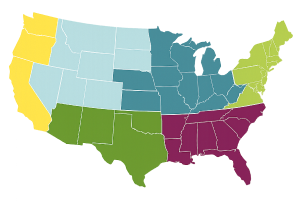
How do we use your location?
Knowing your location helps us recommend plants that will thrive in your climate, based on your Growing Zone.
White Baptisia, also called White Wild Indigo or White False Indigo, is native to central North American prairies. Plants make stunning specimens in borders, cottage gardens, and rock gardens, and naturalize well in prairies and meadows. In the garden setting, plant among Goldenrod, Pale Purple Coneflower, Prairie Dropseed Grass, and Butterfly Weed for season-long color. White Baptisia is slow to establish in the garden, but individual plants are very long-lived. Select your planting site carefully, as plants develop a deep taproot and do not tolerate being transplanted once established. Plants tend to take on a shrubby appearance after flowering. You can trim foliage after flowering to maintain a more rounded plant form, however, this removes the seed heads which add interest late in the season. The Xerces Society identifies White Baptisia as a plant of special value to native bees and bumblebees. It also serves as an occasional host plant to butterflies, including Wild Indigo Duskywing, Hoary Edge, Southern Dogface, and Orange Sulfur Butterflies.
As soon as your order is placed you will receive a confirmation email. You will receive a second email the day your order ships telling you how it has been sent. Some perennials are shipped as potted plants, some as perennial roots packed in peat. The ‘Plant Information’ section describes how that item will ship. All perennials and fall-planted bulbs are packaged to withstand shipping and are fully-guaranteed. Please open upon receipt and follow the instructions included.
Perennials and fall-planted bulbs are shipped at the proper planting time for your Growing Zone. Perennial and fall-planted bulb orders will arrive separately from seeds. If your order requires more than one shipment and all items are shipping to the same address, there is no additional shipping charge. See our shipping information page for approximate ship dates and more detailed information. If you have any questions, please call Customer Service at (802) 227-7200 or contact us by email or chat.